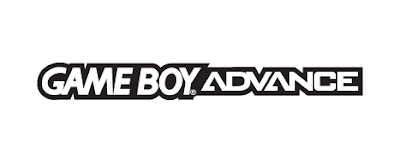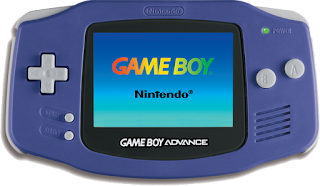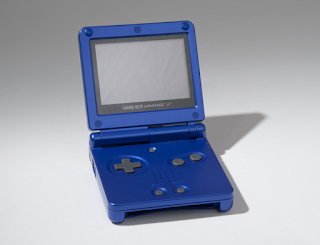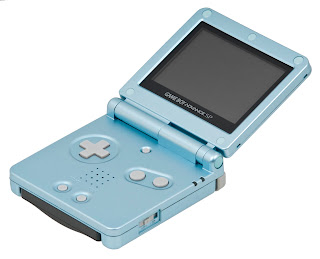The Game Boy Advance (Japanese: ゲームボーイアドバンス Hepburn: Gēmu Bōi Adobansu?), often shortened to GBA, is a 32-bit handheld video game console developed, manufactured and marketed by Nintendo. It is the successor to the Game Boy Color.
Contrary to the previous Game Boy models, which were all following the "portrait" form factor of the original Game Boy (designed by Gunpei Yokoi), the Game Boy Advance was designed in a "landscape" form factor, putting the buttons to the sides of the device instead of below the screen. The Game Boy Advance was designed by the French designer Gwénaël Nicolas and his Tokyo-based design studio Curiosity Inc.
GAMEBOY, ADVANCE (2001)
Backward compatibility for Game Boy and Game Boy Color games is provided by an 4/8 MHz Z80 coprocessor (Game Boy Advance software can use the audio tone generators to supplement the primary sound system), while a link port at the top of the unit allows it to be connected to other devices via use of a Nintendo Game Link cable or GameCube link cable. When playing Game Boy or Game Boy Color games on the Game Boy Advance, the L and R buttons can be used to toggle between a stretched widescreen format (240×144) and the original screen ratio of the Game Boy (160×144). Game Boy games can be played using the same selectable color palettes as on the Game Boy Color. Every Nintendo handheld system following the release of the Game Boy Advance SP has included a built-in light and rechargeable battery.
GAMEBOY, ADVANCE SP (2003)
In early 2003, Nintendo introduced a new form-factor for the handheld, known as the Game Boy Advance SP (model AGS-001) is an upgraded version of Nintendo's Game Boy Advance. The "SP" in the name stands for "Special". The redesigned unit resembles a pocket-size laptop computer, including a folding case approximately one-half the size of the original unit. It also supports a rechargeable lithium ion battery, a significantly brighter LCD screen, and an internal front-light that can be toggled on and off. The redesign was intended to address some common complaints about the original Game Boy Advance, which had been criticized for being somewhat uncomfortable to use, especially due to an overly dark screen.
GAMEBOY, THE ORIGINAL (2005)
Around the same time as the release of the Game Boy Micro, Nintendo released a new backlit version of the SP (model AGS-101) in North America (commonly referred to as the "GBA SP+", SPII, or SP2).[citation needed] The switch that controls the light now toggles between "normal" (which itself is already brighter than the original Game Boy Advance SP's screen), and "bright", an intense brightness level similar to an LCD television set.
GAMEBOY, MICRO (2005)
In September 2005, Nintendo released a second redesign of the Game Boy Advance. This model, dubbed the Game Boy Micro, is similar in style to the original Game Boy Advance's horizontal orientation, but is much smaller and sleeker. The Game Boy Micro also allows the user to switch between several colored faceplates to allow customization, a feature which Nintendo advertised heavily around the Game Boy Micro's launch. Nintendo also hoped that this "fashion" feature would help target audiences outside of typical video game players. Unlike the previous Game Boy Advance models, Game Boy Micro is unable to support Game Boy and Game Boy Color titles. The Game Boy Micro did not make much of an impact in the video game market as it was overshadowed by Nintendo's other portable, the Nintendo DS.
This is the end of Game Boy Advance Family, I Hope you enjoy with this information.





No comments:
Post a Comment